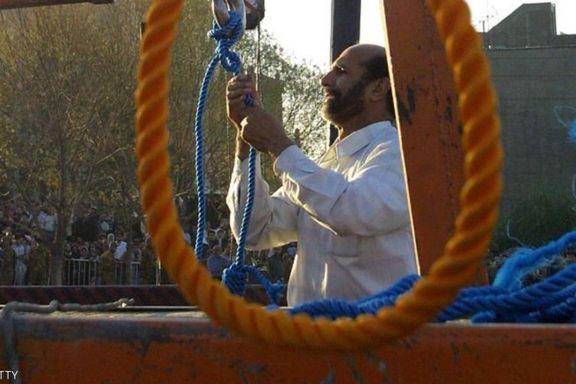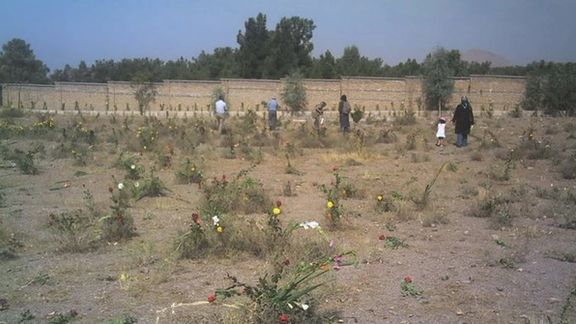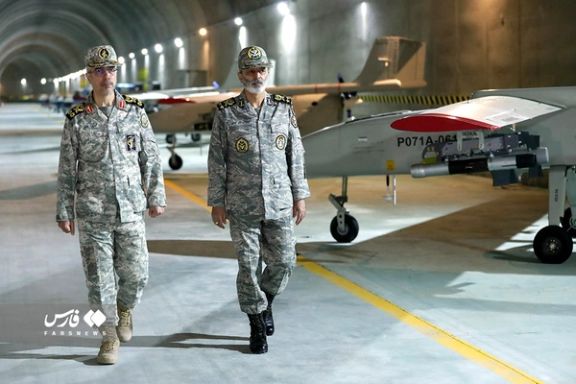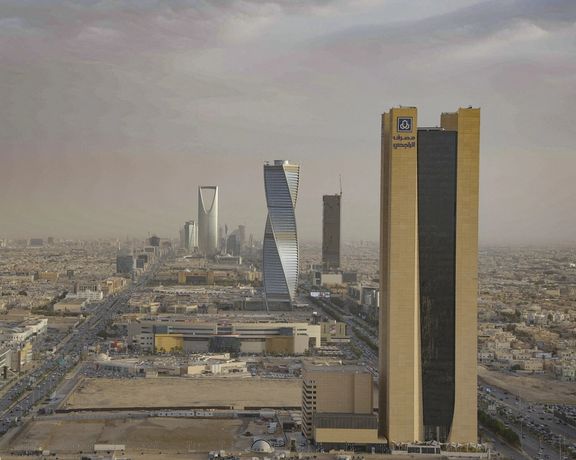Iran Hanged 26 People In 10 Days To Create Fear, Rights Group Says

Amid a new wave of popular protests across Iran, the country’s judiciary has hanged at least 26 prisoners in various cities over the past 10 days.

Amid a new wave of popular protests across Iran, the country’s judiciary has hanged at least 26 prisoners in various cities over the past 10 days.
Oslo-based Iran Human Rights reported the spike in executions on Friday, saying that the sudden increase, as several cities in the country are the scene of anti-government protests, shows that the Islamic Republic authorities use the death penalty as a means of creating fear in society.
According to data collected by the right group, at least 26 people, including two women, were executed from May 17 to 27 in 11 Iranian provinces. Seven of the executed men were Baluchi citizens -- an ethnic minority making up five percent of the population -- and were sentenced to death on "drug-related" charges.
Calling for the abolition of the death penalty, Iran Human Rights Director, Mahmoud Amiri-Moghaddam said, “While most of those executed were charged with crimes such as murder and drug offences, the authorities use the death penalty as a political tool. The executions are carried out with the aim of suppressing dissent.”
Earlier in the month, Amnesty International’s annual report on the worldwide use of the death penalty showed Iran as a country with a “disturbing spike” in executions.
The 66-page report, published Tuesday, found Iran executed at least 314 people in 2021, a 28 percent jump from at least 246 in 2020 and the highest figure since 2017. Amnesty said that in Iran “death sentences were disproportionately used against members of ethnic minorities.”

Iranian authorities are putting up high concrete walls around a cemetery near the capital where hundreds of victims of the 1988 prison executions are buried.
A new video posted on social mediaon Friday shows that tall concrete walls and poles for surveillance cameras are being erected around Khavaran cemetery, southeast of Tehran.
In a statement Friday, Justice-Seekers of Khavaran, a group of families of the victims and survivors of the prison purges, called on authorities to immediately stop more barriers to the resting place of their loved ones, and said they will launch an international campaign to make their voices heard by the international community.
In 1988, an unknown number of executed prisoners were buried in mass and individual graves at Khavaran which had previously been used to bury non-Muslims including Armenian Christians, Hindus and members of the persecuted Baha’i faith.
Authorities have never disclosed the number of those executed in prisons across the country from August 1988 until February 1989. Between 4,500 and 10,000 prisoners are believed to have been killed. Almost all victims were serving prison terms when clerical rulers decided to eliminate them.
Most victims were members or supporters of the Mujahedin-e Khalq Organization (MEK) as well as Marxists and other members of other leftists groups.

Justice for Iran, a London-based rights organization, in a tweet on Saturday said restricting access to the site of mass graves allows the Islamic Republic to further destroy evidence of the crimes it has committed. Mass graves are crime scenes and must remain intact until they can be independently investigated to identify the remains of the victims and the sequence of events when the crimes happened, the rights organization said.
In 2018 Justice for Iran published a report on mass graves of political prisoners in various Iranian cities including Khavaran. According to the report, authorities have on numerous occasions tried to destroy evidence of the burials at Khavaran and other places, including by bulldozing the sites.
The unmarked graves in Khavaran were discovered soon after the executions by victims’ relatives who were never told where their loved ones had been buried. At Khavaran they found limbs and partially buried bodies of victims in shallow unmarked mass graves.
The news about the graves soon spread among those in search of the graves of their loved ones and the cemetery itself took the place of graves never found as many who regularly go there have no evidence of their loved one is buried there. Victims’ families call the cemetery “The Flower Garden of Khavaran”.
Despite constant harassment and persecution, Mothers of Khavaran, a group of mothers and families of victims, have fought for over three decades to bring the authorities to reveal the burial places of their loved ones.
In April 2021, members of the prosecuted Baha’i religious community in Tehran were ordered to bury their dead on the site of a mass grave at Khavaran although they said their own allocated site still had plenty of burial space. They were also told that the remains of the executed prisoners had been exhumed.
"This is the latest in a series of criminal attempts over the years by Iran's authorities to destroy mass grave sites of the 1988 prison massacres in a bid to eliminate crucial evidence of crimes against humanity," said Amnesty International's deputy Middle East director, Diana Eltahawy following the Baha’i community’s revelation.

Iran said on Saturday the crew of two Greek tankers seized by its Revolutionary Guards on Friday had not been detained and are on board their vessels.
Iranian forces seized two Greek tankers in the Persian Gulf on Friday, shortly after Tehran warned it would take "punitive action" against Athens over the confiscation of Iranian oil by the United States from a tanker held off the Greek coast.
"The crew of the two Greek tankers have not been arrested, and all crew members ... are in good health and are being protected, and provided with necessary services while on board, in accordance with international law," Iran's Ports and Maritime Organization said in a statement carried by state media.
The two vessels were stopped over unspecified "maritime violations", the body said.
Greece said on Friday an Iranian navy helicopter landed on Greek-flagged vessel Delta Poseidon in international waters and took the crew hostage. It said a similar incident took place on another Greek-flagged vessel near Iran, without naming the ship. Athens said both actions violated international law.
Greek authorities last month impounded the Iranian-flagged Pegas off Greece due to European Union sanctions. The United States later confiscated the Iranian oil cargo held onboard.
The Pegas and its Russian crew were later released, but the seizure inflamed tensions as Iran and world powers seek to revive a 2015 nuclear deal.
Separately, Nour News, affiliated to an Iranian state security body, said: "Iran will not remain passive in the face of any threat to its interests, and testing Iran's will is a strategic error that will entail heavy costs for the United States and its entourage."
Reporting by Reuters

Mohammad Bagheri, chief of staff of the Iranian armed force, has unveiled Iran’s first cruise missile than can be fired from a drone, named Heidar-1.
Visiting the underground ‘strategic drone base 313,’ Bagheri also revealed a drone that can be mounted on a helicopter. The Heidar-1’s UAV was reported to have a 200km range and be capable of hitting a target at a maximum speed of 1,000km per hour.

Over 100 drones are kept in the base in the Zagros mountains, including Kaman-22, Kaman-12 and Qods Mohajer, the last an intelligence, surveillance, target-acquisition, and reconnaissance drone capable of carrying four precision-guided munitions. The base is also home to the Ababil-5, which is fitted with Qaem-9 missiles, an Iranian-made version of the air-to-surface United States Hellfire missile.
With drones increasingly deployed in the region – partly due to their low cost – since Israel and the United States introduced them in the 1970s, Bagheri told commanders and engineers in a speech that Iran had to remain vigilant and up-to-date with equipment and tactics. Wednesday’s reported attack on Iran’s Parchin military site has been attributed to an Israeli ‘suicide drone.’
Major-General Abdolrahim Mousavi, the army commander-in-chief of the army, said that Iran’s drones were “the region's most powerful” and its capacity to upgrade them “unstoppable." Military analysts credit Turkey, which has domestic production, as leading the use of drones in the region, while the United Arab Emirate has both its own manufacturing and imports from China.

Four police forces were injured in an assault by a gunman in downtown Tehran, Iran’s official news agency IRNA reported on Saturday, adding that the assailant was injured and arrested.
Ali Salehi, Tehran’s public and revolutionary court prosecutor said that a man fired at police officers stationed in front of the building of Foundation of Martyrs and Veterans Affairs.
He added "four police officers" were injured in the incident and taken to hospital for treatment. According to reports, a passerby was also injured during the shooting.
Noting that the assailant was also shot and arrested, Salehi said that the man also killed four people and injured two others in the city of Shahriar west of Tehran with a firearm on Friday and fled the scene.
Hossein Rahimi, the head of the Tehran police, said that preliminary investigations showed the assailant committed the criminal act following a years-long property dispute with some of the victims in the earlier shooting.
Rahimi added that the assailant was spotted Saturday morning near the Martyrs Foundation building and was identified by the officers present at the scene, and he immediately started shooting at them.
No further details were immediately available about the case, but Rahimi said investigation is still underway about the case.

A senior Israeli official has visited Saudi Arabia ahead of United States President Joe Biden’s scheduled visit to the region, Israel’s Channel 12 said Friday.
The sides discussed security, with their interests further aligned in recent years over Iran as Jerusalem and Riyadh prepare to normalize relations, the network said, with the senior Israeli official warmly received at a palace in the Saudi capital.
The US National Security Council Middle East coordinator, Brett McGurk, and State Department energy envoy Amos Hochstein traveled to Saudi Arabia earlier this week for talks that included global energy supplies, Iran, and other regional issues.
Axios reported this week that the Biden administration had been mediating between Saudi Arabia, Israel, and Egypt on transferring two islands – Tiran and Sanafir – in the Red Sea from Egyptian to Saudi sovereignty with Israeli “consent.” If successful, this could be a first step to ‘normalizing’ Saudi-Israel relations.
Iran's Supreme Leader Ali Khamenei and several Iranian military commanders and politicians have cautioned Arab states against following the United Arab Emirates and Bahrain in ‘normalizing’ relations with Israel. The Arab League position, dating to 2002 and proposed by Saudi Arabia, is that Arab states should not do so until Israel recognizes a Palestinian state in the territories it has militarily occupied since 1967.
Iran and Saudi relations have thawed in recent months with talks mediated by Iraq. Turkish President Recep Erdogan also recently visited Saudi Arabia.